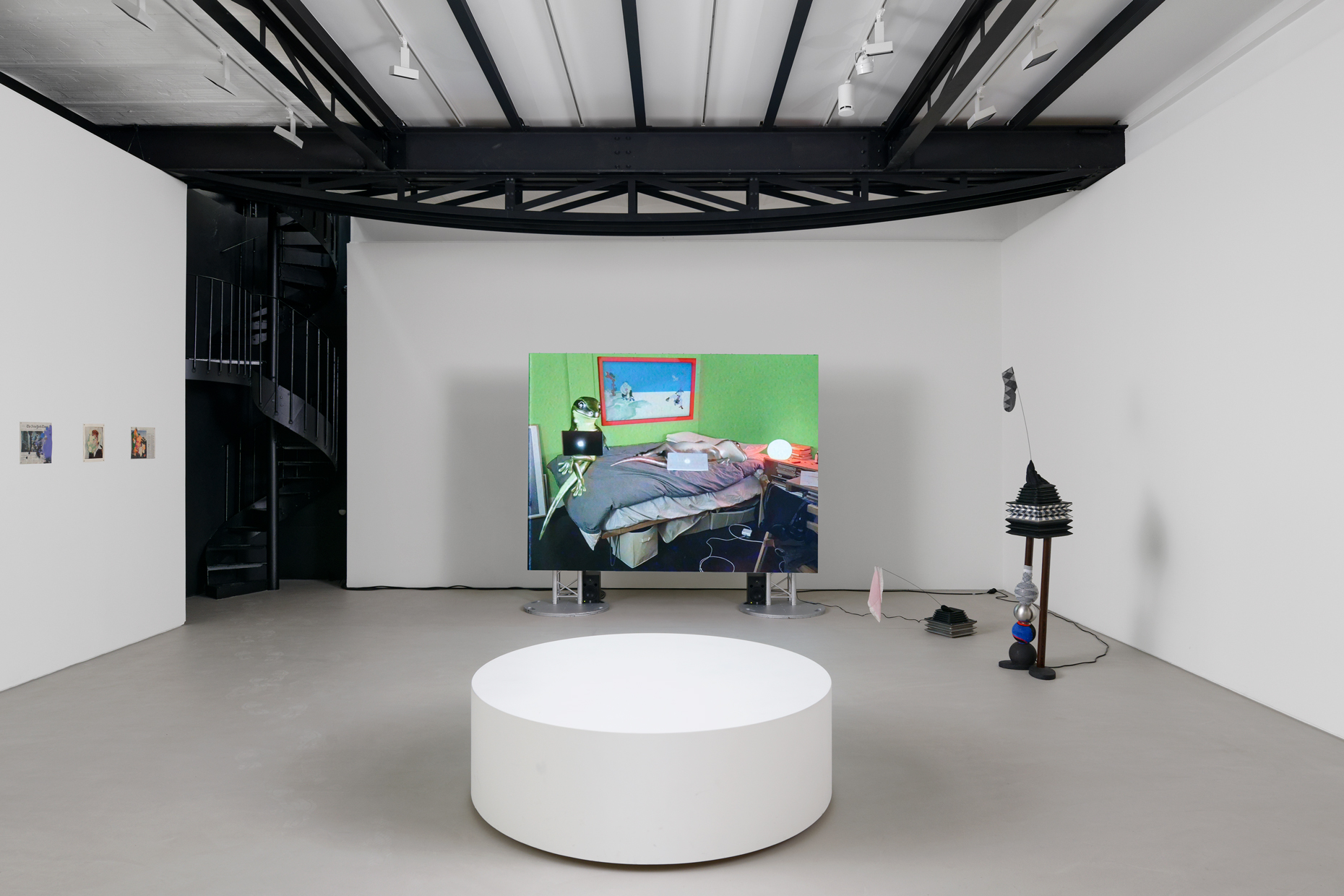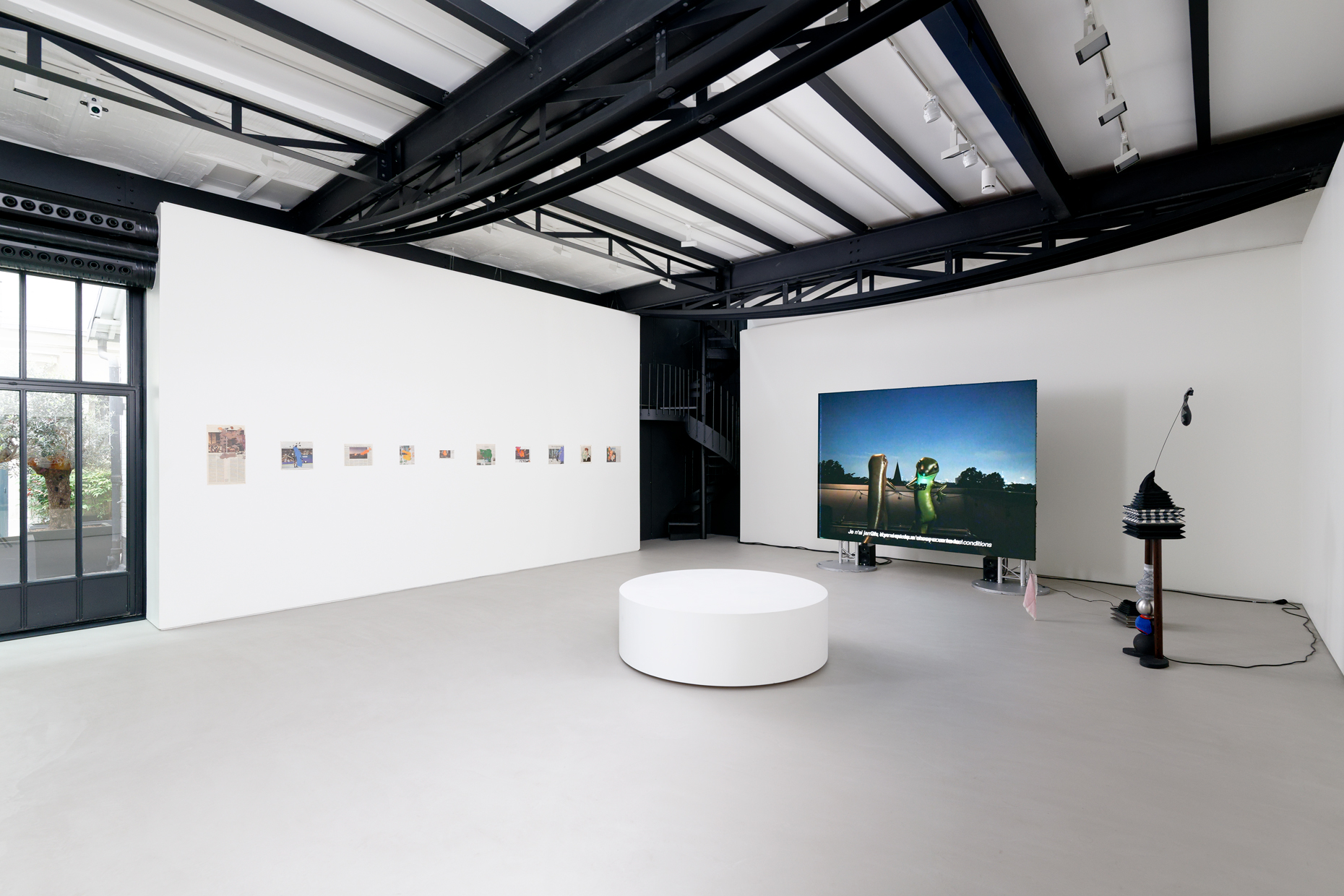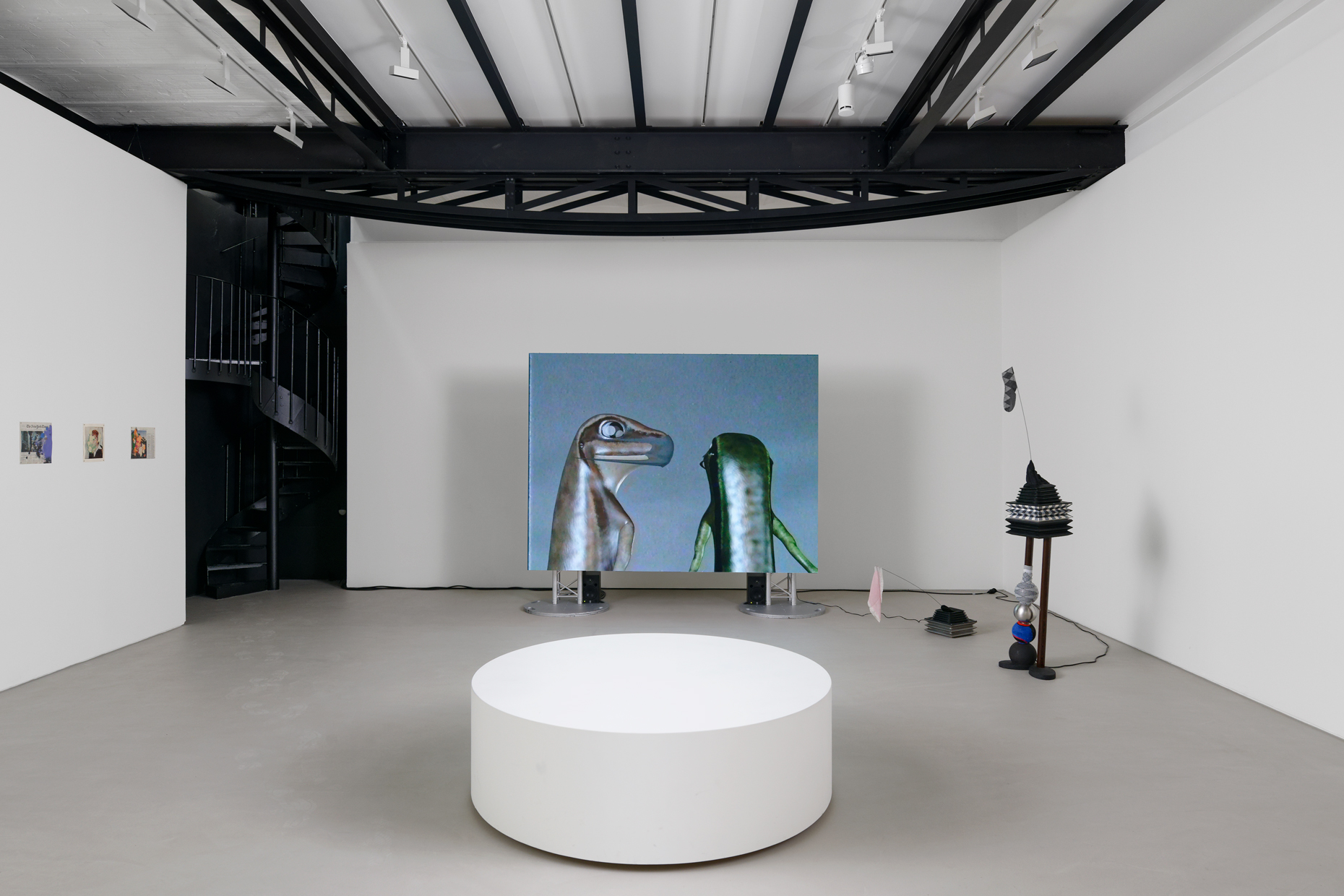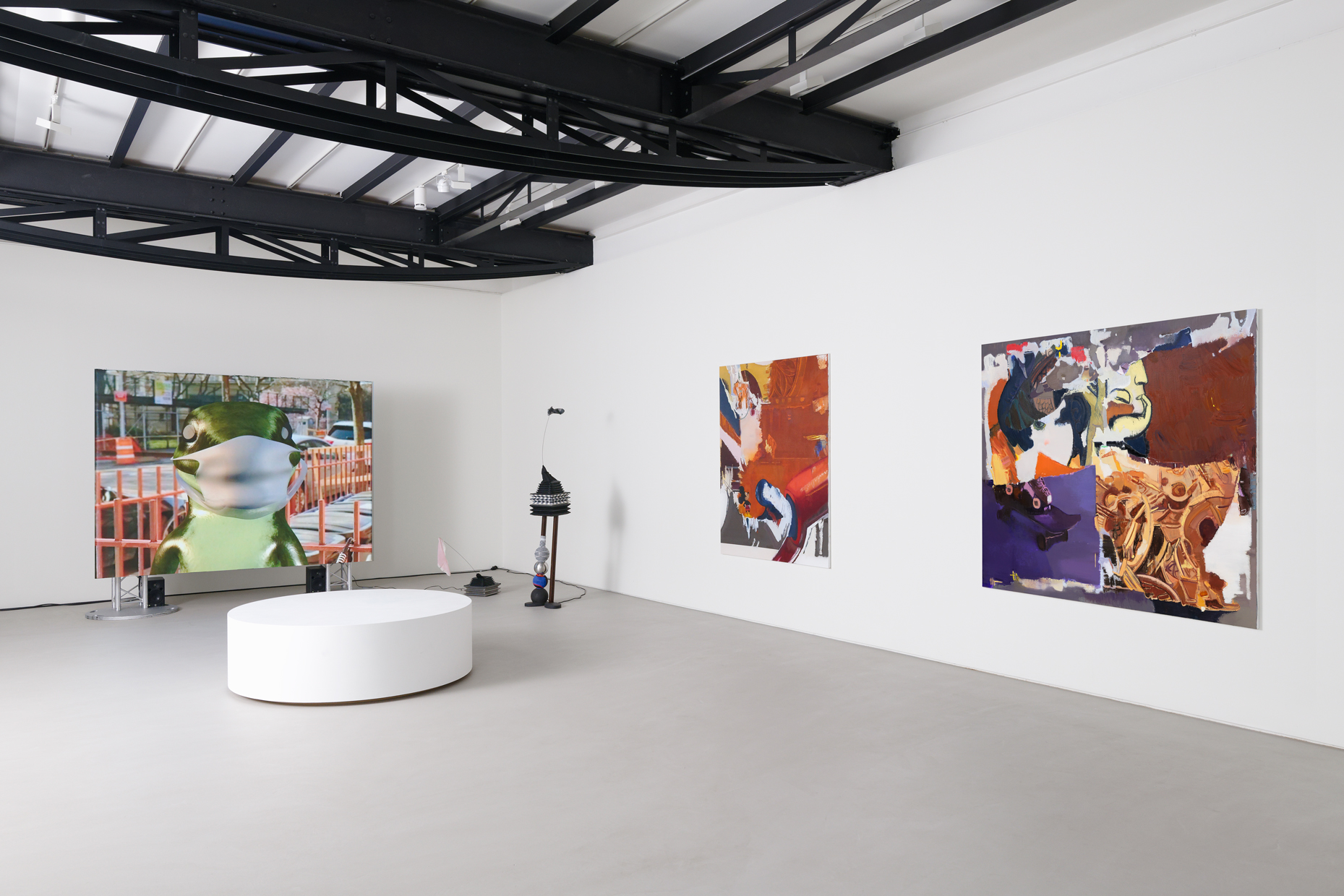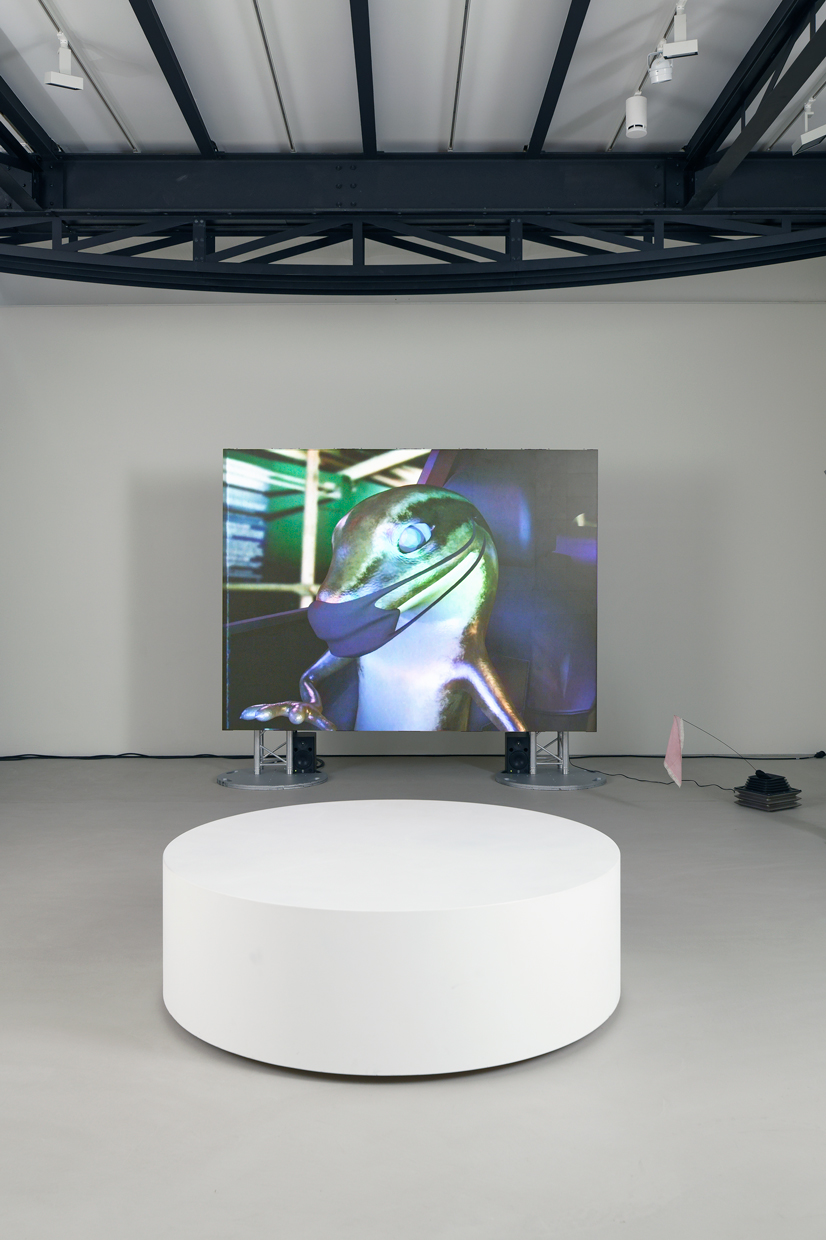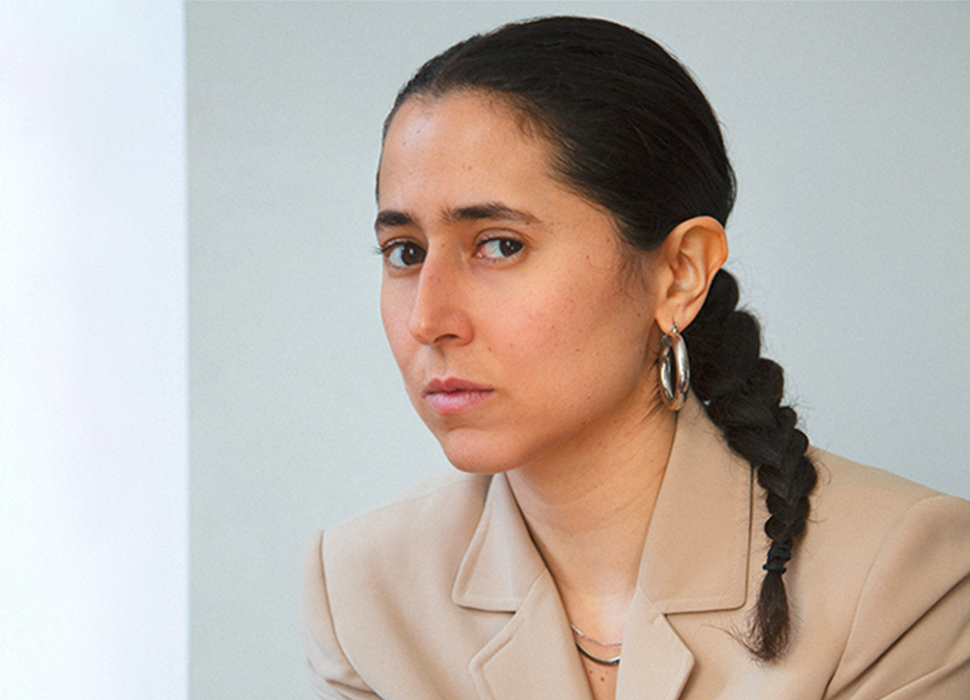
Meriem Bennani
Moroccan artist born in 1988 in Rabat, Meriem Bennani lives and works in New York. Her installations, made up of multiple projections, inhabit spaces in a way that is particular and gigantic. The artist does not shy away from addressing the complexity of social and political issues. Meriem Bennani will participate in the next prize Reiffers Art Initiatives Group Show in May 2023.
Biography
Her films, installations, and immersive environments merge references to globalised pop culture and traditional representations of Moroccan culture and history with humor and fantasy.
The artist addresses the issue of fractured identities and more particularly the place of women in contemporary society. During the lockdown, Meriem Bennani teamed up with filmmaker Orian Barki to spontaneously produce an animated series called “2 Lizards” (2020). Completed after eight episodes and several months of success, this kind of miniseries featured two lizards wandering around an empty Brooklyn neighborhood.
Their dialogue is inspired both by news cycle announcements made by Dr. Fauci (the chief epidemiologist in charge of advising the U.S. presidency on Covid-19, who often stood in opposition to Donald Trump), as well as discussions with friends. These videos, posted on the Instagram account @meriembennani, humorously epitomise the daily lives of millions of people around the world who have identified with these characters.
Texts
"Meriem Bennani, Irrevenant, Funny and Unique"
— Metal Magazine, 2023
"Young artist Meriem Bennani is one of a kind: she’s created a fictional character that designs avant-garde Hijab looks for avant-garde women, an animation series called Some Silly Stories, and added her very own touch to some music videos. The artist approaches political issues with humour rather than violence, works together with some of her relatives and has lived –and was educated– in three different countries with three different cultures. We talk to her in order to know more about such an interesting combination of elements in such a unique person.
You were born and raised in Morocco, but studied later in Paris and New York. How do you think living in such different environments affected your creativity and artistic expression? These three places are very much part of me and my work. To put it in a simple way: Morocco is home in a visceral and motherly way; France is the country I was educated by and in, and New York is the place I chose to move to as an adult. Sometimes they coexist peacefully and other times they are in big trouble with each other. These conflicts constitute the unstable ground most of my ideas are built within and on. It was also super interesting going to school in Paris and then in New York. I like to think what I learnt from school mainly resides in the cracks between two completely opposite approaches towards art education."
You were born and raised in Morocco, but studied later in Paris and New York. How do you think living in such different environments affected your creativity and artistic expression? These three places are very much part of me and my work. To put it in a simple way: Morocco is home in a visceral and motherly way; France is the country I was educated by and in, and New York is the place I chose to move to as an adult. Sometimes they coexist peacefully and other times they are in big trouble with each other. These conflicts constitute the unstable ground most of my ideas are built within and on. It was also super interesting going to school in Paris and then in New York. I like to think what I learnt from school mainly resides in the cracks between two completely opposite approaches towards art education."
"L’ART DU DÉTOURNEMENT MERIEM BENNANI" by Martha Kirszenbaum
— Numéro Art, 2023
IN HER SHAPE-SHIFTING PRACTICE OF VIDEOS, INSTALLATIONS,
AND IMMERSIVE ENVIRONMENTS, THE NEWYORK
BASED ARTIST WITTILY AND IRONICALLY INTERWEAVES
GLOBALIZED POPULAR CULTURE AND THE
UBIQUITY OF DIGITAL TECHNOLOGIES WITH THE VERNACULAR
OF HER NATIVE MOROCCO.
It was March 2020. Like the rest of the world, I was locked down at home. Scrolling through Instagram, I came across Meriem Bennani’s account. She had just posted a video, made with fellow artist Orian Barki, that would prove hugely significant in this period of planetary anxiety. In the first episode of the animation 2 Lizards, the anthropomorphic reptiles of the title – one green, voiced by Bennani, the other brown and voiced by Barki – stand on a Brooklyn rooftop at sunset discussing their first week of shelter in place. In the background, a Miles Davis-style serenade is played by the neighbours: on a roof across the way, we see a horse on the trumpet, a bear responds with keyboard and subwoofers, while a sheep joins them on the double bass. 2 Lizards paints a surreal portrait of the first months of the COVID-19 pandemic in New York City, highlighting the helplessness and uncertainty as well as the unexpected moments of shared community. With dialogues that brilliantly reflect the anxiety, boredom, and absurdity of lockdown, Bennani and Barki’s lizards became an instant Instagram hit. Encouraged by the success of this first episode, they went on to create seven more, posting them on Bennani’s feed between March and July 2020.
Bennani’s practice generates its own universe and vocabulary, combining her personal imagination with an aesthetic inherited from a rich lineage of cartoons – spanning the entire range from the experimental to Disney – and using sophisticated post-production techniques and technologies. Often deployed to comic effect, the 2D and 3D animations (created with software such as After Effects or Cinema 4D) are complemented by audio tracks either specially composed or found on the web. Bennani’s work is often read as a diasporic critique of the internalized effects of post-colonialism on its subjects. Such was the case, for example, with her installation Mission Teens, shown at Paris’s Fondation Louis Vuitton in 2019, which follows a group of teenagers from the French lycée in Rabat, where the artist herself studied. Her film trilogy Life on the CAPS (2018–22) again explores complex political conflicts, detailing the intuitive life aspirations of those involved, but without attempting to provide a clear resolution. It takes place in a dystopian supernatural future on CAPS, a fictional island in the middle of the Atlantic Ocean, at a time when air travel has been replaced by teleportation. Illegal migrants to the US are intercepted and redirected to CAPS, where they live in an endless limbo. Layering live action footage and computer-generated animation, Bennani intuitively adapts editing techniques that evoke documentaries, science fiction, phone footage, music videos, and reality TV. Moving fluidly from the imaginary to the geopolitical, the microscopic scale of DNA to the eye of global surveillance, the power of individual experience to the collective consciousness, Life on the CAPS draws on emotive and formal experimentations that refuse all boundaries.
In her installations, Bennani pays particular attention to the subversion of architecture and everyday objects in a persistent gesture of distancing and self-derision. Whether featuring low-slung red-velvet couches, as in FLY, shown at PS1 in 2016, or psychedelic objects, such as the apple-green and strawberry-pink hair-salon driers and massage chairs made for her Art Dubai commission and shown at the 2019 Whitney Biennial, her works recall the interiors of the Maghreb or the beauty salons, amusement parks, and shopping malls of the Arabian Gulf. Moreover, Bennani seeks to exhibit her work in multi-sensory environments rather than on a single monitor or screen, exploring the new models of media consumption that have developed with smartphones and other portable devices. At the Whitney, she incorporated moving images into a large-scale installation that she called a “video viewing garden,” an environment of futuristic planters and seating. On New York’s High Line last year, she created Windy, a kinetic sculpture resembling a tornado in constant motion that references both cartoon twisters and the fast pace of New York life. And for her exhibition last autumn at Brussels’s Clearing gallery, Bennani subverted and motorized a series of everyday objects, such as a seat fitted with a straw parasol pierced like a cheese and sporting broom-shaped legs, or a salad centrifuge that spins both lettuce leaves and socks.
If Bennani has been hailed as one of the most fascinating artists of her generation, it is precisely because of her ability to deconstruct the dichotomies between the West and the global South, and between the public and the private, as well as her skill in unveiling the complexities of cultural production, of artistic disciplines, and of diverse identities. In a globalized world that is increasingly conflicted by the identity politics engendered by late capitalism – and in an artistic community that is often divided by them – Bennani’s deep and generous approach appeals to the infinite hope (or perhaps the crazy utopia) that what we have in common might one day surpass what separates us."
It was March 2020. Like the rest of the world, I was locked down at home. Scrolling through Instagram, I came across Meriem Bennani’s account. She had just posted a video, made with fellow artist Orian Barki, that would prove hugely significant in this period of planetary anxiety. In the first episode of the animation 2 Lizards, the anthropomorphic reptiles of the title – one green, voiced by Bennani, the other brown and voiced by Barki – stand on a Brooklyn rooftop at sunset discussing their first week of shelter in place. In the background, a Miles Davis-style serenade is played by the neighbours: on a roof across the way, we see a horse on the trumpet, a bear responds with keyboard and subwoofers, while a sheep joins them on the double bass. 2 Lizards paints a surreal portrait of the first months of the COVID-19 pandemic in New York City, highlighting the helplessness and uncertainty as well as the unexpected moments of shared community. With dialogues that brilliantly reflect the anxiety, boredom, and absurdity of lockdown, Bennani and Barki’s lizards became an instant Instagram hit. Encouraged by the success of this first episode, they went on to create seven more, posting them on Bennani’s feed between March and July 2020.
Bennani’s practice generates its own universe and vocabulary, combining her personal imagination with an aesthetic inherited from a rich lineage of cartoons – spanning the entire range from the experimental to Disney – and using sophisticated post-production techniques and technologies. Often deployed to comic effect, the 2D and 3D animations (created with software such as After Effects or Cinema 4D) are complemented by audio tracks either specially composed or found on the web. Bennani’s work is often read as a diasporic critique of the internalized effects of post-colonialism on its subjects. Such was the case, for example, with her installation Mission Teens, shown at Paris’s Fondation Louis Vuitton in 2019, which follows a group of teenagers from the French lycée in Rabat, where the artist herself studied. Her film trilogy Life on the CAPS (2018–22) again explores complex political conflicts, detailing the intuitive life aspirations of those involved, but without attempting to provide a clear resolution. It takes place in a dystopian supernatural future on CAPS, a fictional island in the middle of the Atlantic Ocean, at a time when air travel has been replaced by teleportation. Illegal migrants to the US are intercepted and redirected to CAPS, where they live in an endless limbo. Layering live action footage and computer-generated animation, Bennani intuitively adapts editing techniques that evoke documentaries, science fiction, phone footage, music videos, and reality TV. Moving fluidly from the imaginary to the geopolitical, the microscopic scale of DNA to the eye of global surveillance, the power of individual experience to the collective consciousness, Life on the CAPS draws on emotive and formal experimentations that refuse all boundaries.
In her installations, Bennani pays particular attention to the subversion of architecture and everyday objects in a persistent gesture of distancing and self-derision. Whether featuring low-slung red-velvet couches, as in FLY, shown at PS1 in 2016, or psychedelic objects, such as the apple-green and strawberry-pink hair-salon driers and massage chairs made for her Art Dubai commission and shown at the 2019 Whitney Biennial, her works recall the interiors of the Maghreb or the beauty salons, amusement parks, and shopping malls of the Arabian Gulf. Moreover, Bennani seeks to exhibit her work in multi-sensory environments rather than on a single monitor or screen, exploring the new models of media consumption that have developed with smartphones and other portable devices. At the Whitney, she incorporated moving images into a large-scale installation that she called a “video viewing garden,” an environment of futuristic planters and seating. On New York’s High Line last year, she created Windy, a kinetic sculpture resembling a tornado in constant motion that references both cartoon twisters and the fast pace of New York life. And for her exhibition last autumn at Brussels’s Clearing gallery, Bennani subverted and motorized a series of everyday objects, such as a seat fitted with a straw parasol pierced like a cheese and sporting broom-shaped legs, or a salad centrifuge that spins both lettuce leaves and socks.
If Bennani has been hailed as one of the most fascinating artists of her generation, it is precisely because of her ability to deconstruct the dichotomies between the West and the global South, and between the public and the private, as well as her skill in unveiling the complexities of cultural production, of artistic disciplines, and of diverse identities. In a globalized world that is increasingly conflicted by the identity politics engendered by late capitalism – and in an artistic community that is often divided by them – Bennani’s deep and generous approach appeals to the infinite hope (or perhaps the crazy utopia) that what we have in common might one day surpass what separates us."
